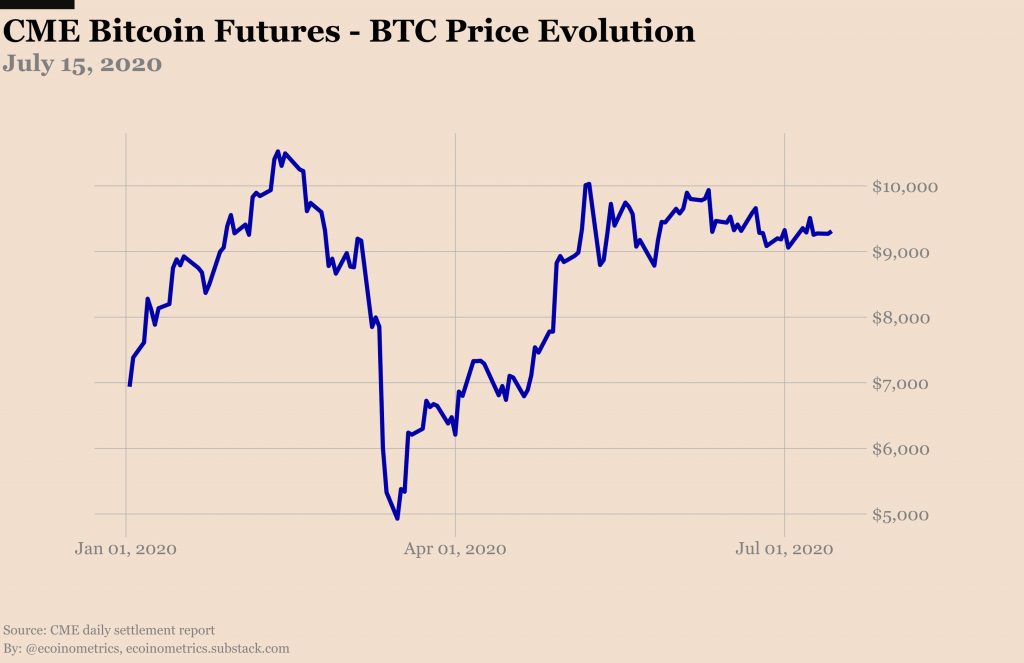Crypto News
Bitcoin’s volatile days will return when it decouples from stocks

Bitcoin is not acting like a cryptocurrency when its volatility is sinking and it’s highly correlated with the stock market. And right now, both those things are happening.
Since the beginning of May, the cryptocurrency which lost 50 percent of its value in a 15-hour window earlier in the year, is trading in a surprisingly stable zone. Locked between $8,500 and $10,000, even with the downturn in the economy, the Bitcoin block halving and this week’s Twitter hack, the price hasn’t budged. What has got the volatility in such a snag, and what will get it out? Maybe the answer to both these questions could be the same.
According to a recent report by Ecoinometrics the volatility in the market is getting squeezed with every passing day, with the price evolution chart forming, in technical analysis terms, an ascending triangle. For a breakout to ensure [which is likely the successor to an ascending triangle], a “structural change” is required.
“The argument boils down to something simple. Historically speaking the current volatility is very low. So unless there was a structural change in the market volatility should come back up. And with higher volatility comes a breakout.”

CME Bitcoin Futures price evolution | Source: Ecoinmetrics report
Where can such a change come from? From a market that is increasingly running parallel to Bitcoin, the stock market. Bitcoin’s correlation with the S&P500 has reached a 5-year high as the two assets, despite recovering differently, are moving in tandem.
Speaking to AMBCrypto, Nick from Ecoinometrics suggested that this correlation is not only significant for the Bitcoin market as it currently stands, but for it to break out of its stable-spree and re-enter a period of volatile trading. Going back to the start of it all, Nick stated that Bitcoin’s decrease in volatility is tied to its high correlation with the S&P500. He stated,
“Less price movements with less traded volume means a lot of the trading that does happen has a short term bias. And this might at least partially explain the correlation.”
The short term bias is especially prominent in the market with futures positions not only decreasing but having more and more short-term expiry periods, as derivative traders don’t want to take long-term bets on the price of the cryptocurrency in this time of low-volatility.
Going forward for the volatility to return to the Bitcoin market, according to Nick, the king coin needs to decouple from its strong tie with the stock market i.e. for the correlation between the two to decrease. What is the main catalyst for such a decoupling move, you ask? Well, look no further than whale trades. He stated,
“I would expect this high correlation to die down when volatility returns to Bitcoin. We are only a couple of whale trades away from that.”
High-value Bitcoin transactions have caused major price moves in the past. On 2 April 2019, Bitcoin jumped from $4,000 to over $5,000 in a day, during a period of bearish movement, with the source of it all based in a whale going long on a trade worth $100 million which “maximized price impact” according to CoinMetrics.
Our theory is that a single committed actor went long and traded in a manner that maximized price impact. The movement in price started at 04:30 UTC time, the point in the day where global liquidity is at a minimum.
— CoinMetrics.io (@coinmetrics) April 17, 2019
In a market as temperamental as the cryptocurrency market, volatility does not ebb-and-flow, its either a drought [like the current situation] or a downpour [like 2 April 2019, or 12 March 2020]. Either way, don’t just keep your eyes on Bitcoin’s price, but also its coupling, or lack thereof, with the stock market.

